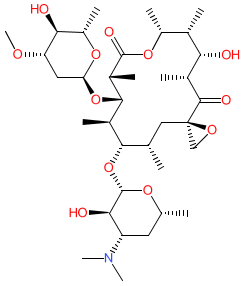GtoPdb is requesting financial support from commercial users. Please see our sustainability page for more information.
|
Synonyms: amimycin | landomycin | Matromycin® | P.A.105 | Romicil®
oleandomycin is an approved drug
Compound class:
Natural product
Comment: Oleandomycin is a 14-membered macrolide antibacterial compound, originally isolated from Streptomyces antibioticus.
|
|
|||||||||||||||||||||||||||||||||||
| No information available. |









